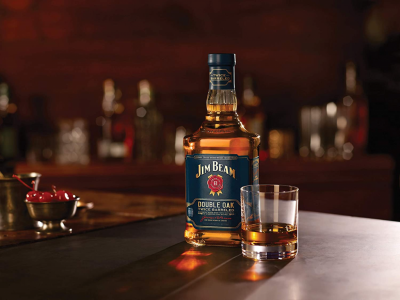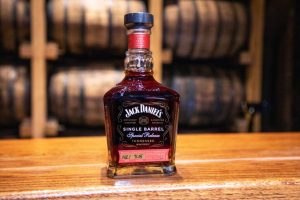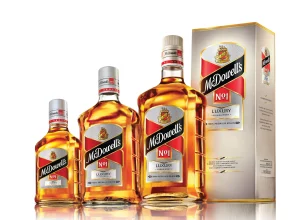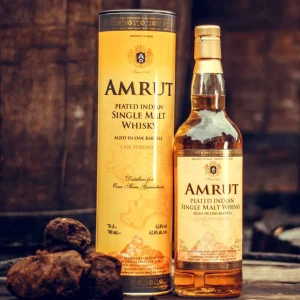Whisky is a popular alcoholic beverage that is enjoyed by people all over the world. One of the most important factors that contribute to the unique flavor and character of the whisky is its alcohol percentage.
The whisky alcohol percentage is within 40% to 50% on the average. However, it can vary widely depending on the type of whisky and where it was distilled.
Some whisky brands have a higher alcohol percentage than others, which can affect the taste, aroma, and overall experience of drinking the whisky. Understanding the alcohol percentage of whisky is important for both connoisseurs and casual drinkers who want to appreciate the nuances of this complex spirit.
What is whisky, and how is it made?
Whisky is a type of alcoholic beverage that is made from grains such as barley, corn, rye, or wheat. To make whisky, the grains are first soaked in water to start the process of germination, which releases enzymes that convert the starches in the grains into sugar. Once the grains have sprouted, they are dried and ground into a coarse flour called “mash.”
The mash is then mixed with hot water to create a sugary liquid called “wort.” Yeast is added to the wort to start the process of fermentation, where the yeast consumes the sugar and produces alcohol and carbon dioxide. The resulting mixture is called “wash” and has an alcohol content of around 5-10%.
The wash is then distilled, which means it is heated to a high temperature so that the alcohol vaporizes and is collected in a separate container. The liquid that remains after distillation, known as “spent wash,” is typically used as animal feed.
The distilled alcohol is then aged in oak barrels for several years, which is where whisky gets its distinct color, flavor, and aroma. The longer the whisky is aged, the more complex its flavor becomes. Finally, the whisky is bottled and sold for people to enjoy.
Furthermore, whisky is made from grains that are sprouted, mashed, fermented, distilled, aged in oak barrels, and then bottled. Each step in the process contributes to the unique character of the final product.
What is the legal definition of whisky in different countries?
The legal definition of whisky can vary between countries, but generally, it refers to a distilled spirit made from grains that have been aged in oak barrels for a certain period of time.
Here are some examples of the legal definitions of whisky in different countries:
- United States: In the U.S., the legal definition of whisky is set by the Alcohol and Tobacco Tax and Trade Bureau (TTB). According to the TTB, a whisky must be made from grains, distilled at no more than 80% alcohol by volume (ABV), and aged in new, charred oak barrels for a minimum of 2 years. The final product must also be bottled at no less than 40% ABV.
- Scotland: In Scotland, a whisky must be distilled from malted barley, water, and other grains and must be aged for a minimum of 3 years in oak casks. Blended whisky can also be made by combining different single-malt whiskies. The Scotch Whisky Regulations of 2009 provide more detailed specifications for the production and labeling of whisky in Scotland.
- Canada: In Canada, a whisky must be made from grains, distilled at less than 94.8% ABV, and aged in wood barrels for a minimum of 3 years. Canadian whisky can also contain up to 9.09% of other spirits, such as sherry or brandy.
- Japan: In Japan, whisky is defined as a distilled spirit made from grains such as barley, corn, or rice and must be aged in wood casks for a minimum of 3 years. Japanese whisky is known for its high quality and has won numerous awards in international competitions.
These are just a few examples of the legal definitions of whisky in different countries. The specific requirements can vary depending on the country and the type of whisky being produced.
How is alcohol percentage measured in whisky?
The alcohol percentage in whisky is typically measured using a tool called a hydrometer. A hydrometer is a glass instrument that measures the specific gravity of a liquid, which is the density of the liquid relative to water. The specific gravity of a liquid changes as the number of dissolved solids or alcohol changes.
To measure the alcohol percentage in whisky, a sample of the whisky is poured into a tall, narrow container such as a graduated cylinder. The hydrometer is then gently lowered into the whisky and allowed to float freely. The point where the surface of the whisky meets the hydrometer is noted, and the specific gravity is read off the scale on the hydrometer.
The specific gravity reading can then be used to calculate the alcohol percentage using a formula. One common formula is the Gay-Lussac formula, which states that the alcohol percentage by volume is equal to the difference between the initial and final specific gravity readings multiplied by a factor of 0.789.
What is the typical range of alcohol percentage in whisky?
The typical range of alcohol percentage in whisky is between 40% and 60%. However, the exact alcohol percentage can vary depending on the type of whisky and the country where it is produced.
In general, single malt whiskies tend to have a slightly lower alcohol percentage, ranging from 40% to 50%, while blended whiskies may have a higher alcohol percentage, up to 60%.
In the United States, the legal minimum alcohol percentage for whisky is 40% ABV, while in Canada, it is 40% to 46% ABV. In Scotland, the minimum alcohol percentage for whisky is also 40% ABV, although some whiskies may have a higher percentage.
Higher alcohol percentages in whisky can provide a stronger and more complex flavor, but they can also make the whisky more potent and potentially more difficult to drink. Lower alcohol percentages may be smoother and easier to drink, but they may have a less intense flavor.
Overall, the alcohol percentage in whisky is an important factor in its flavor and character, and different whiskies can have different percentages depending on various factors such as production methods and aging.
How does alcohol percentage affect the taste of whisky?
The alcohol percentage, or ABV (alcohol by volume), can have a significant impact on the taste of whisky.
Here are some ways that alcohol percentage affects the taste of whisky:
- Flavor intensity: Higher ABV whiskies can have a more intense flavor profile, with stronger notes of spice, smoke, and other flavors. Lower ABV whiskies may have a milder flavor profile.
- Mouthfeel: Alcohol can create a warming, tingling sensation on the tongue and in the mouth. Higher ABV whiskies may have a more intense mouthfeel, while lower ABV whiskies may be smoother and easier to drink.
- Finish: The finish, or aftertaste, of a whisky, can be affected by its ABV. Higher ABV whiskies may have a longer, more intense finish, while lower ABV whiskies may have a shorter finish.
- Dilution: Adding water to whisky can dilute the ABV and change the flavor profile. The addition of water can bring out certain flavors and aromas and may make the whisky easier to drink.
- Balance: The ABV can affect the balance of flavors in a whisky. For example, a whisky with a high ABV may have a stronger alcohol flavor that can overwhelm other flavors, while a whisky with a lower ABV may have a better balance of flavors.
Overall, the alcohol percentage can play a significant role in the taste and character of a whisky. Tasting and comparing different ABV whiskies can help develop a better understanding of how ABV affects the flavor profile.
What is the difference between cask strength and regular whisky?
Cask strength whisky, also known as barrel-proof whisky, is bottled straight from the barrel without any dilution or blending with other whiskies. The ABV of cask-strength whisky can vary greatly, but it is typically higher than regular whisky, ranging from 50% to 65% ABV or higher.
Regular whisky, on the other hand, is typically blended with other whiskies and/or water to achieve a consistent ABV and flavor profile. The ABV of regular whisky is usually between 40% and 46% ABV, although it can be higher or lower depending on the specific whisky.
The main difference between cask strength and regular whisky is the ABV and intensity of flavor. Cask-strength whisky is often considered more intense and complex than regular whisky, with a stronger alcohol flavor and more pronounced notes of wood and spice. It can also have a thicker, more viscous mouthfeel. Regular whisky, on the other hand, is generally smoother and more approachable, with a balanced flavor profile that is often easier to drink.
Because cask-strength whisky is bottled at a higher ABV, it can also be more expensive than regular whisky. It is often considered a specialty or premium product and may be preferred by enthusiasts or collectors who enjoy the full, unadulterated flavor of whisky straight from the barrel.
Ultimately, the choice between cask strength and regular whisky comes down to personal preference and taste. Some people prefer the bold, intense flavor of cask-strength whisky, while others prefer the smooth, balanced taste of regular whisky.
How does alcohol percentage affect the price of whisky?
Alcohol percentage can be a significant factor in determining the price of whisky. Here are some ways that alcohol percentage can affect the price of whisky:
- Production costs: Higher ABV whiskies require more time and resources to produce, as they must be distilled and aged for longer periods of time to achieve a higher alcohol percentage. This can make higher ABV whiskies more expensive to produce, which can drive up their price.
- Age: The age of a whisky can also affect its price, as older whiskies are often more expensive due to the increased production costs associated with longer aging periods. Higher ABV whiskies may also require longer aging periods to achieve the desired flavor profile, which can make them more expensive.
- Rarity: Some cask-strength whiskies are produced in limited quantities, which can make them rarer and more valuable to collectors. This rarity can drive up the price of cask-strength whiskies, even if they are not necessarily older or more expensive to produce.
- Prestige: Cask-strength whiskies are often considered premium or specialty products, which can contribute to their higher price. The perception of cask-strength whiskies as high-quality or exclusive products can justify a higher price point, even if the production costs are not significantly higher than regular whiskies.
Overall, the price of whisky is determined by a variety of factors, including alcohol percentage, age, rarity, and prestige. While cask-strength whiskies can be more expensive than regular whiskies due to their higher ABV, other factors can also contribute to their higher price point.
What are some famous high-alcohol whiskies?
There are many famous high-alcohol whiskies, including:
- George T. Stagg: Produced by Buffalo Trace Distillery, this American bourbon is typically bottled at cask strength, which can range from 60% to 75% ABV.
- Laphroaig 10-Year-Old Cask Strength: This Scottish Islay whisky is bottled at cask strength, typically around 58% ABV. It is known for its smoky, peaty flavor and intense alcohol kick.
- Octomore: Produced by Bruichladdich Distillery, this Scottish Islay whisky is known for its extremely high peat levels and high ABV, which can range from 50% to over 60% ABV.
- Booker’s Bourbon: Produced by Jim Beam, this American bourbon is typically bottled at cask strength, which can range from 60% to 70% ABV.
- Aberlour A’Bunadh: This Scottish Speyside whisky is bottled at cask strength, typically around 60% ABV. It is known for its rich, fruity flavor and smooth finish.
- Lagavulin 12-Year-Old Cask Strength: Another Scottish Islay whisky, this expression is bottled at cask strength, typically around 57% ABV. It is known for its intensely smoky flavor and complex aroma.
These are just a few examples of famous high-alcohol whiskies, but there are many other expressions that are bottled at cask strength or with a higher ABV.
What are some famous low-alcohol whiskies?
It is not very common to have low-alcohol whiskies, as the alcohol content is an important factor in the whisky-making process. However, there are some whiskies that have a lower alcohol content than the typical 40-46% ABV range.
Here are a few examples:
- The Famous Grouse: This Scottish blended whisky has an alcohol content of 35% ABV, making it a lower-alcohol option.
- Bushmills Irish Whiskey Black Bush: This Irish whiskey has an alcohol content of 40% ABV, which is on the lower end for a whisky.
- Compass Box Great King Street Artist’s Blend: This Scottish blended whisky has an alcohol content of 43% ABV, which is still within the typical range but on the lower side for a blended whisky.
- Glenlivet 12-Year-Old: This Scottish Speyside single malt whisky has an alcohol content of 40% ABV, which is on the lower end for a single malt whisky.
While these whiskies may have a lower alcohol content than some other expressions, they can still offer complex flavors and aromas that are characteristic of their respective styles.
How does the age of a whisky affect its alcohol percentage?
The age of a whisky does not directly affect its alcohol percentage. The alcohol percentage, or ABV (alcohol by volume), is determined by the amount of alcohol that is present in the whisky when it is bottled.
During the whisky-making process, the distilled spirit is typically placed in oak barrels to mature for a period of time. As the whisky ages in the barrel, it can absorb flavors and aromas from the wood, as well as lose some of its alcohol content due to evaporation. This loss of alcohol content is known as the “angel’s share.”
However, the length of time that the whisky spends in the barrel does not directly determine its alcohol percentage. Instead, the ABV is determined by the distiller’s decision to add water to the whisky after it has matured to bring it down to the desired alcohol content for bottling.
This process, known as “proofing,” is done to ensure consistency across batches and to meet legal requirements for alcohol content.
How does the alcohol percentage of whisky affect its health effects?
While moderate alcohol consumption can have some potential health benefits, excessive alcohol consumption can have negative health effects. The alcohol percentage in whisky can impact its potential health effects in several ways.
Firstly, higher alcohol percentages in whisky can lead to more rapid and severe intoxication if consumed in excess. This can increase the risk of accidents, injuries, and other negative consequences associated with excessive alcohol consumption.
Secondly, higher alcohol percentages in whisky can lead to more severe dehydration, which can contribute to hangovers and other negative physical effects. It is important to drink water and stay hydrated when consuming alcohol, especially when drinking high-alcohol whiskies.
Thirdly, higher alcohol percentages in whisky can contribute to a higher calorie intake. Alcohol contains calories, and higher alcohol percentages mean more calories per serving. This can contribute to weight gain and other negative health effects associated with excessive calorie intake.
It is important to note that the potential health effects of whisky depend not only on its alcohol percentage but also on other factors, such as the individual’s drinking habits, overall health, and other lifestyle factors.
Moderate consumption of whisky, as with any alcohol, can have some potential health benefits when consumed in moderation and as part of a balanced lifestyle. However, excessive consumption can have negative health effects, regardless of the alcohol percentage of the whisky consumed.
How does the alcohol percentage of whisky affect its mixing potential?
The alcohol percentage in whisky can have an impact on its mixing potential, as higher alcohol percentages can affect the flavor and balance of a cocktail.
Whiskies with a higher alcohol percentage, such as cask-strength whiskies, can have a more intense flavor and higher alcohol “burn,” which can overpower other ingredients in a cocktail. These whiskies may be better suited for sipping or for use in cocktails that can stand up to their strong flavor profile.
On the other hand, whiskies with a lower alcohol percentage can be more versatile for mixing, as they can blend more easily with other ingredients without overpowering them. Blended whiskies and some single malts are typically bottled at a lower alcohol percentage, making them more suitable for use in a wide range of cocktails.
Overall, the alcohol percentage in whisky is just one factor to consider when selecting a whisky for mixing cocktails. Other factors, such as the flavor profile, texture, and aroma, can also impact its mixing potential. Ultimately, the best whisky for a particular cocktail will depend on personal taste preferences and the desired flavor profile of the drink.
Conclusion
The whisky alcohol percentage, or ABV, is an important factor to consider when selecting and enjoying this popular spirit. The range of alcohol percentages in whisky can vary widely, from low-alcohol blended whiskies to high-alcohol cask-strength single malts.
The alcohol percentage can impact the flavor, texture, and overall character of a whisky, as well as its potential health effects and mixing potential. Whether enjoying a whisky neat, on the rocks, or in a cocktail, understanding the alcohol percentage in whisky is key to fully appreciating and enjoying this beloved spirit.




